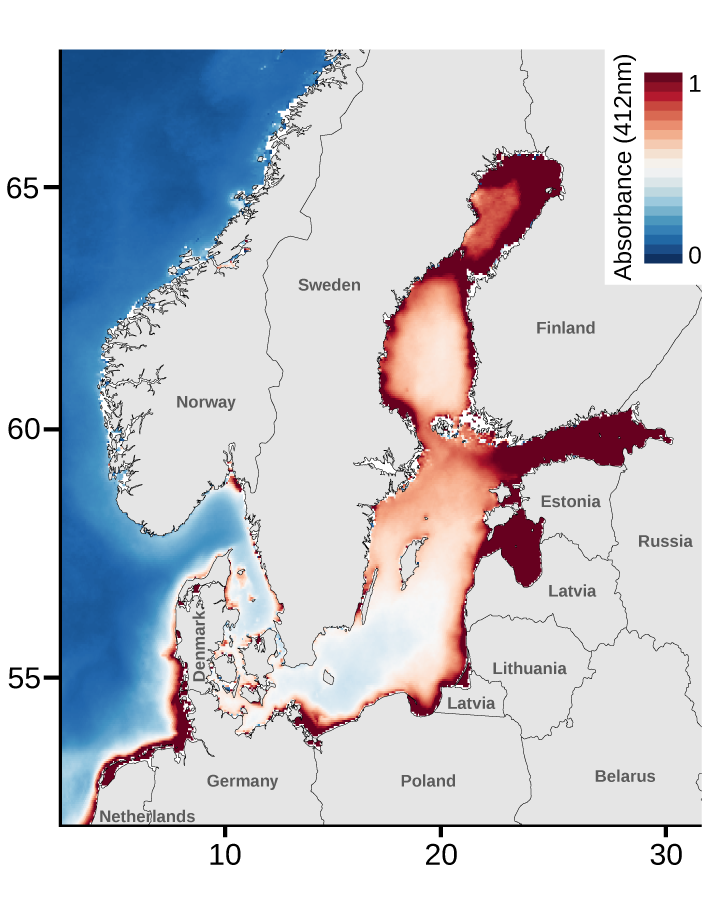
Image -
Modis-AQUA satellite data captures the red-shifted light environment of the Baltic Sea
Modis-AQUA satellite data captures the red-shifted light environment of the Baltic Sea, where dissolved organic matter and shallow depths lead to greater absorbance of wavelengths in the blue light spectrum.
Image courtesy Erik Enbody, Uppsala University
- License:
- Media Use
The content may be downloaded by journalists, bloggers, columnists, creators of public opinion, etc. It can be used and shared in different media channels to convey, narrate, and comment on your press releases, posts, or information, provided that the content is unmodified. The author or creator shall be attributed to the extent and in the manner required by good practice (this means, for example, that photographers should be attributed).
- By:
- Image courtesy Erik Enbody, Uppsala University
- File format:
- .tiff
- Size:
- 714 x 898, 2.46 MB